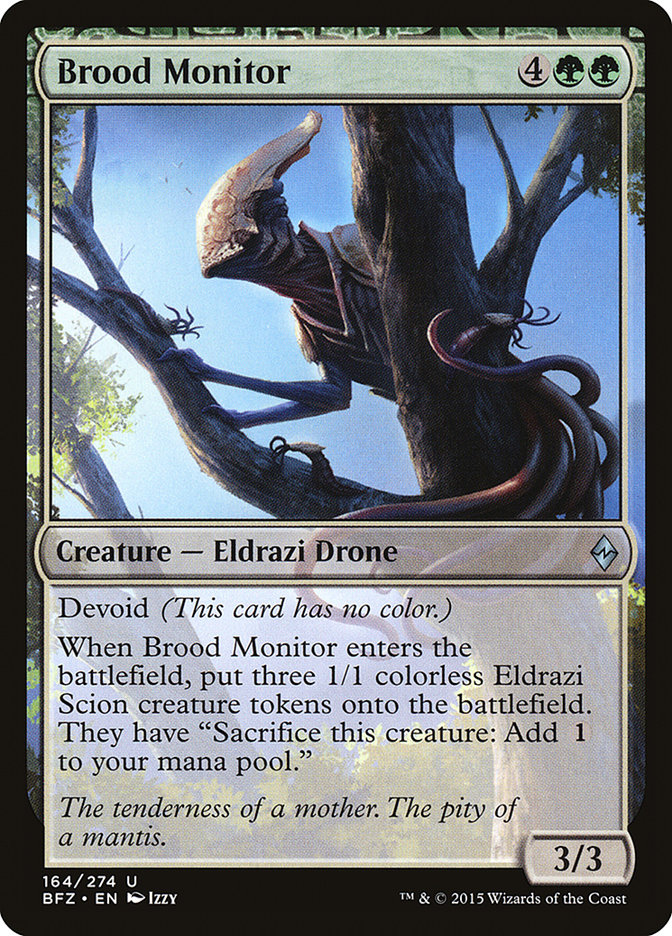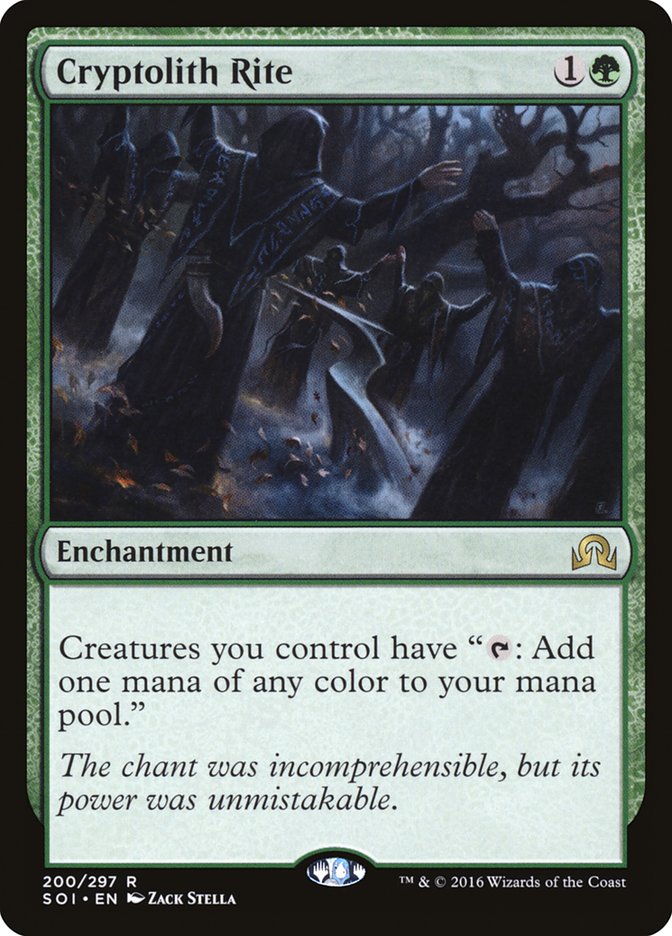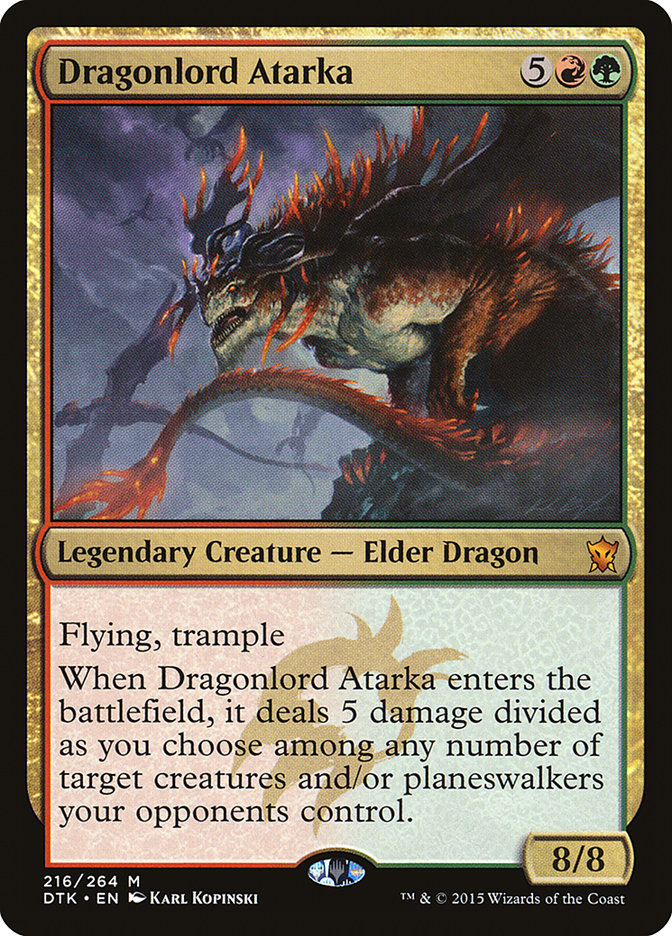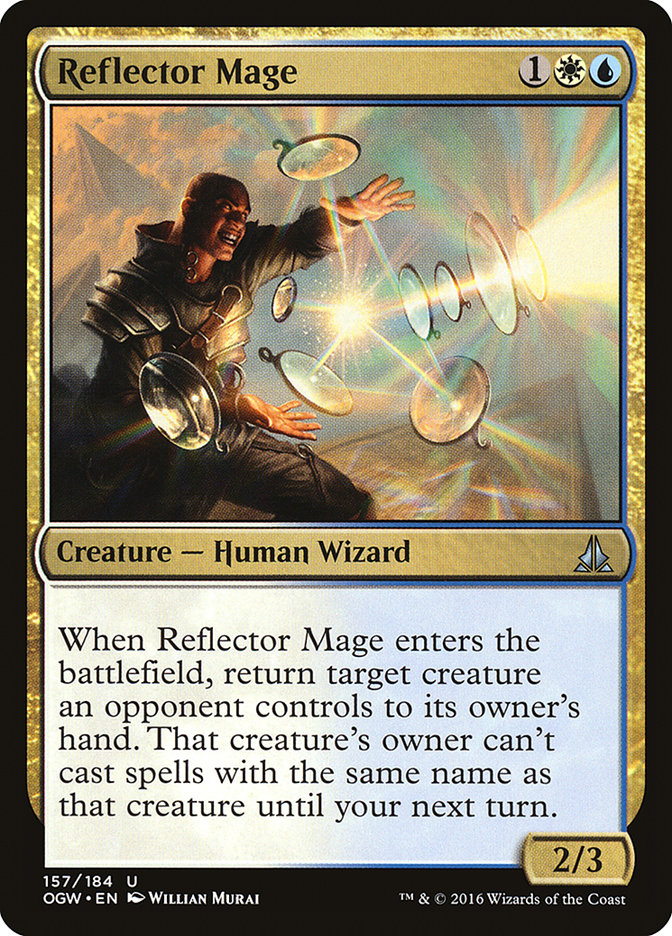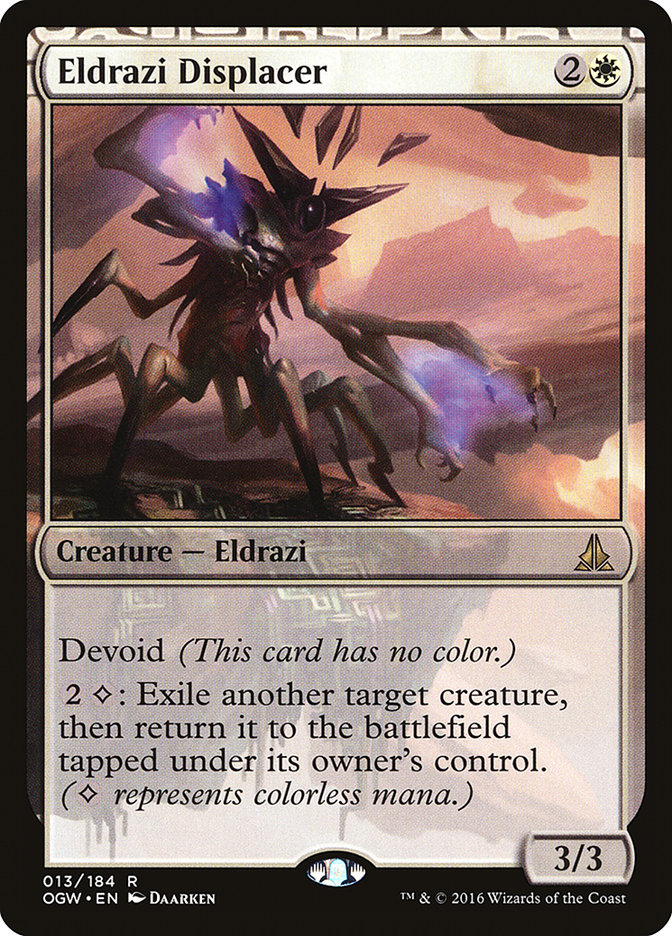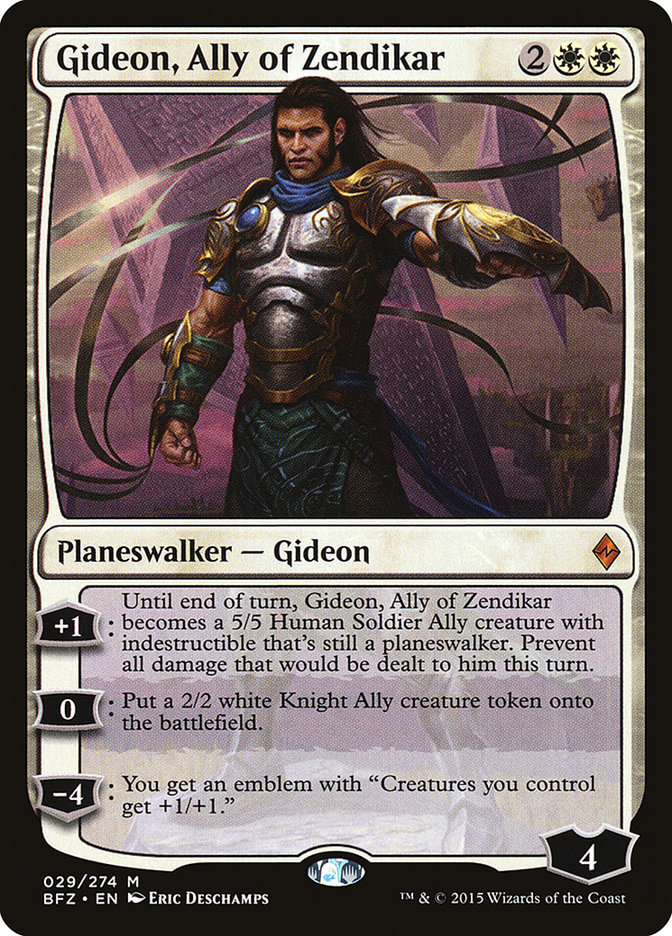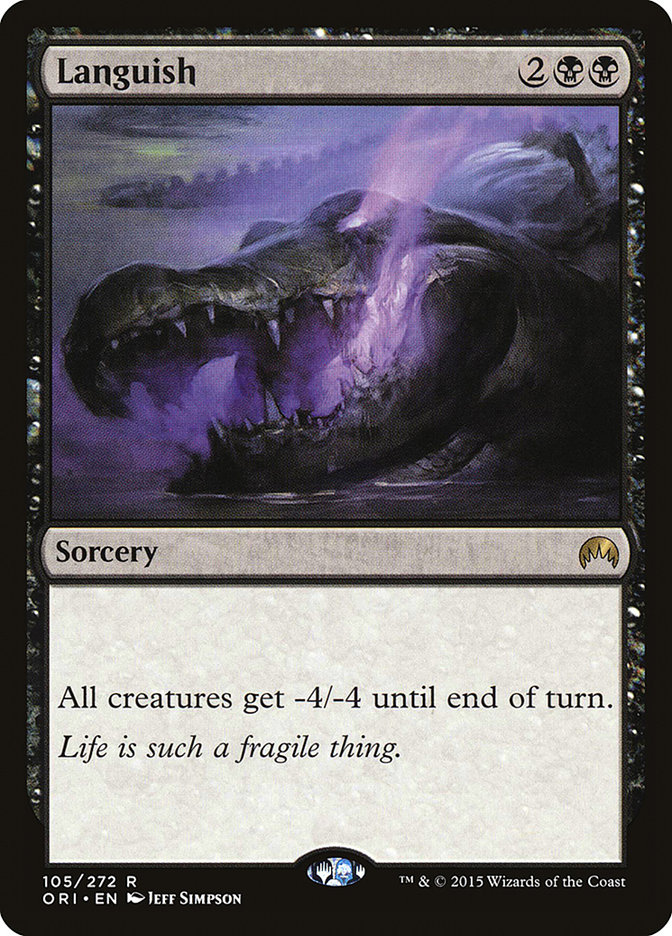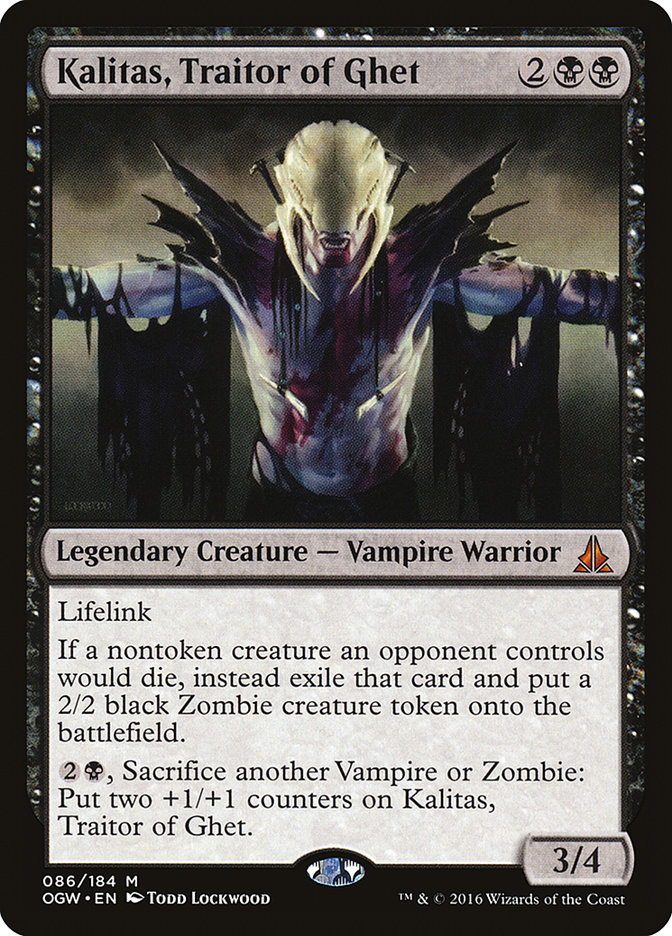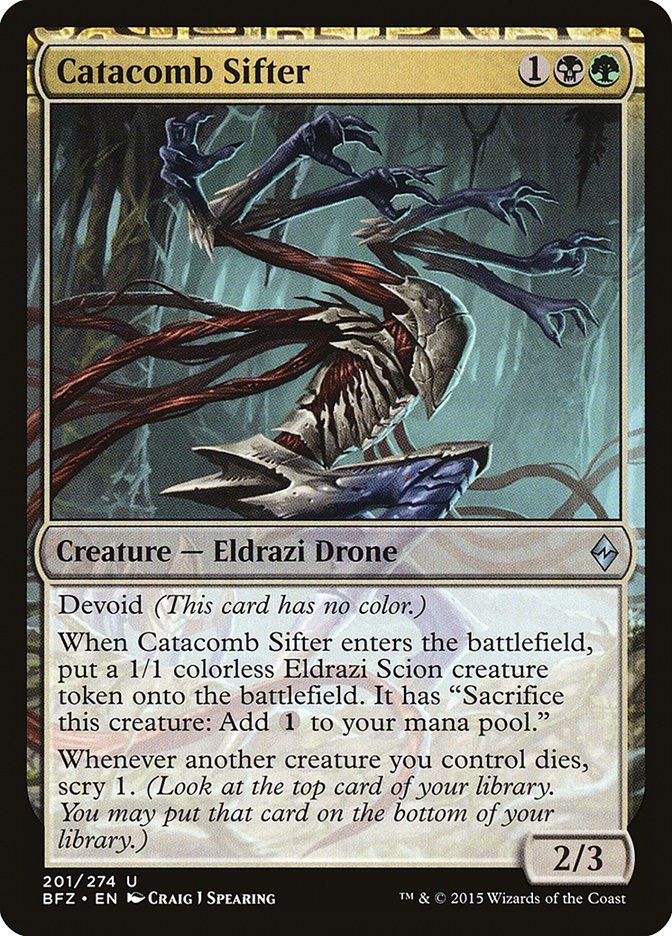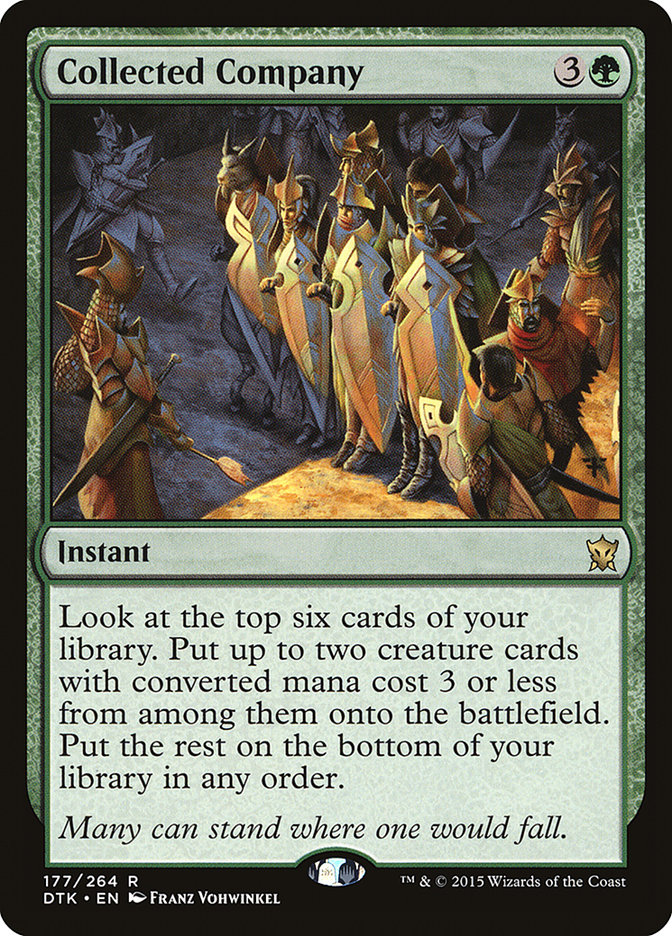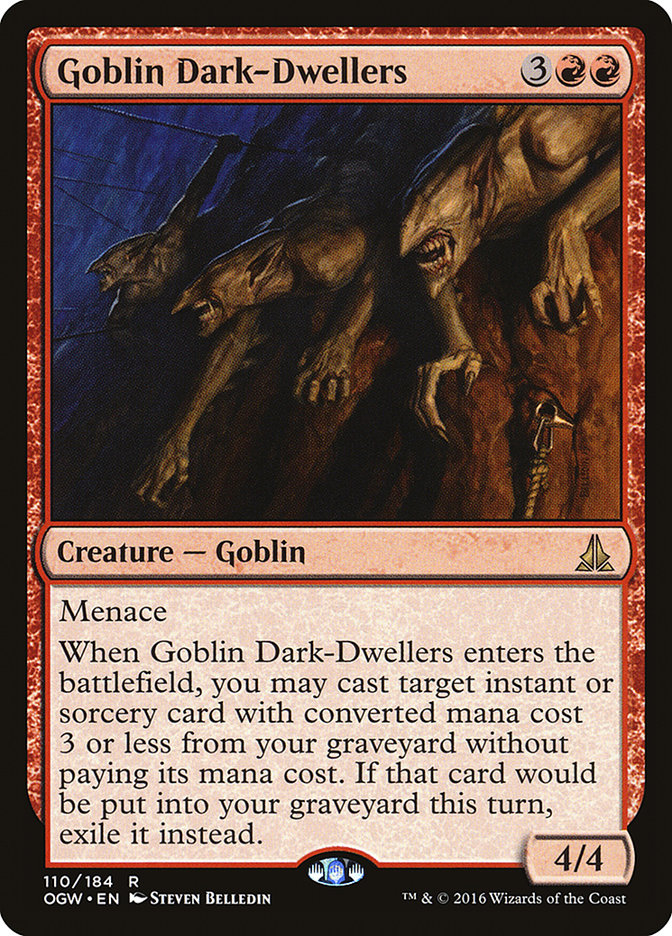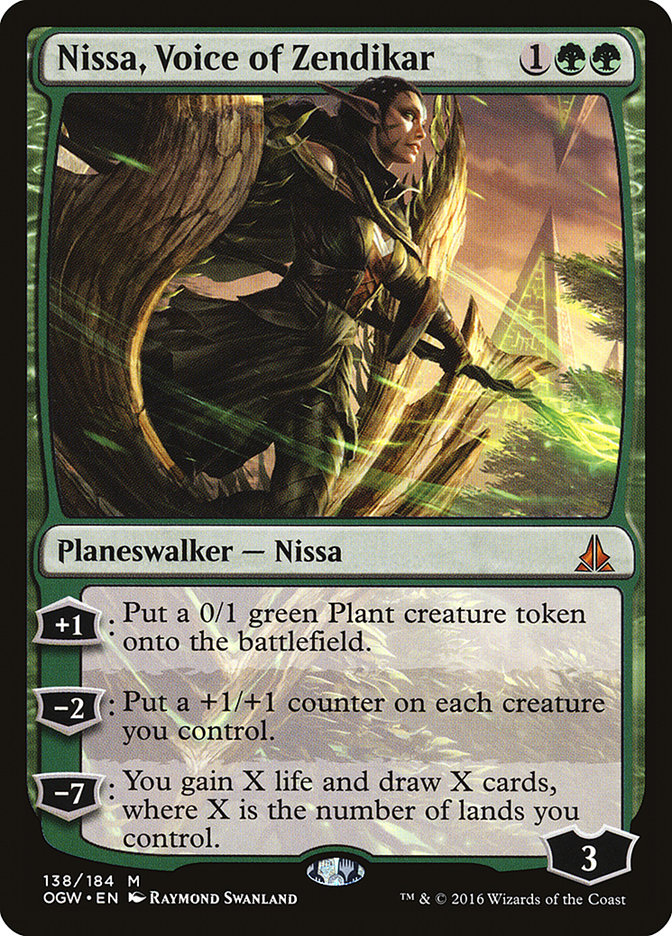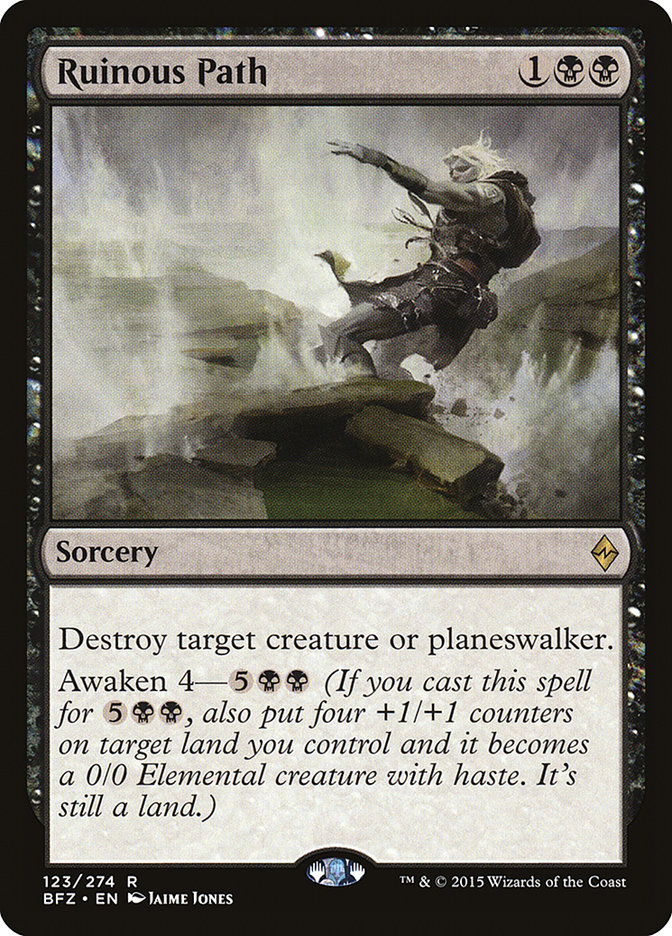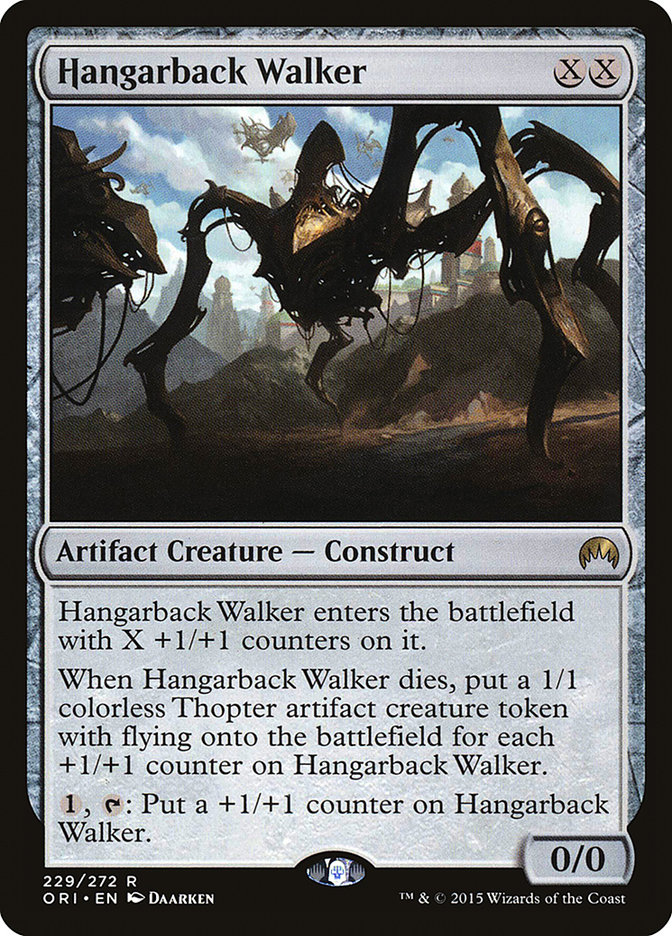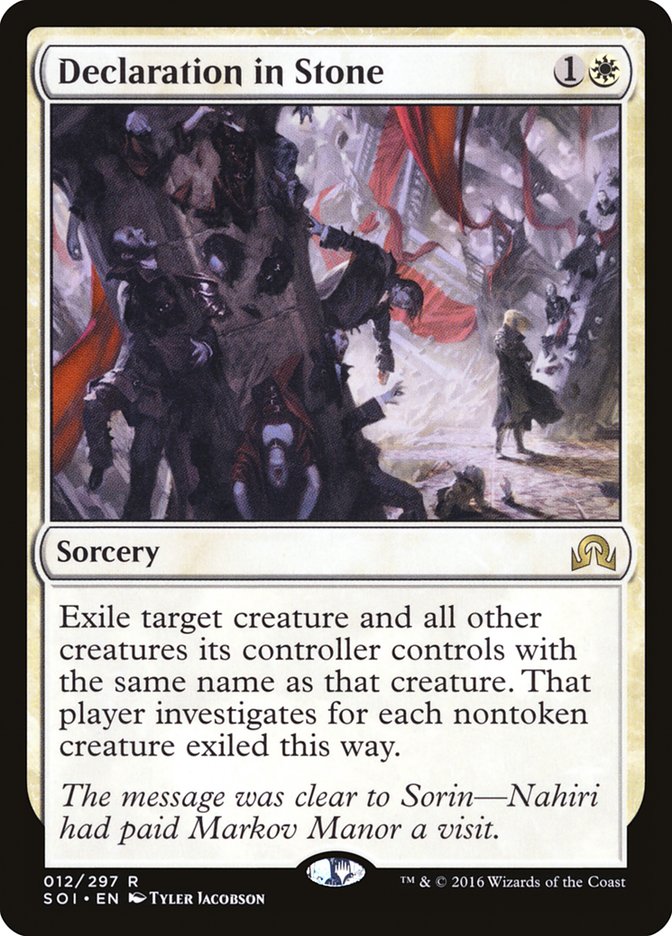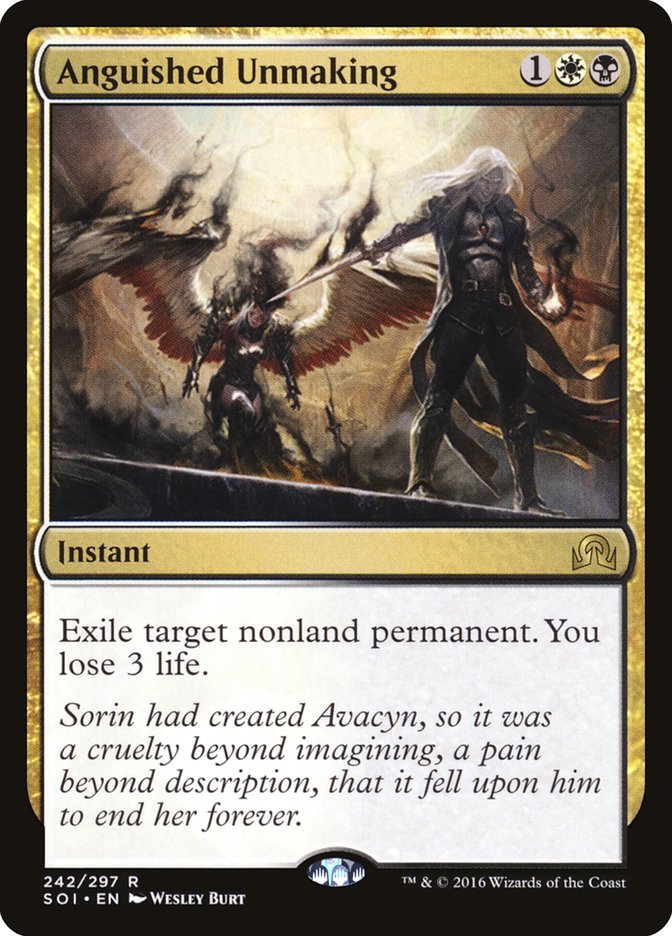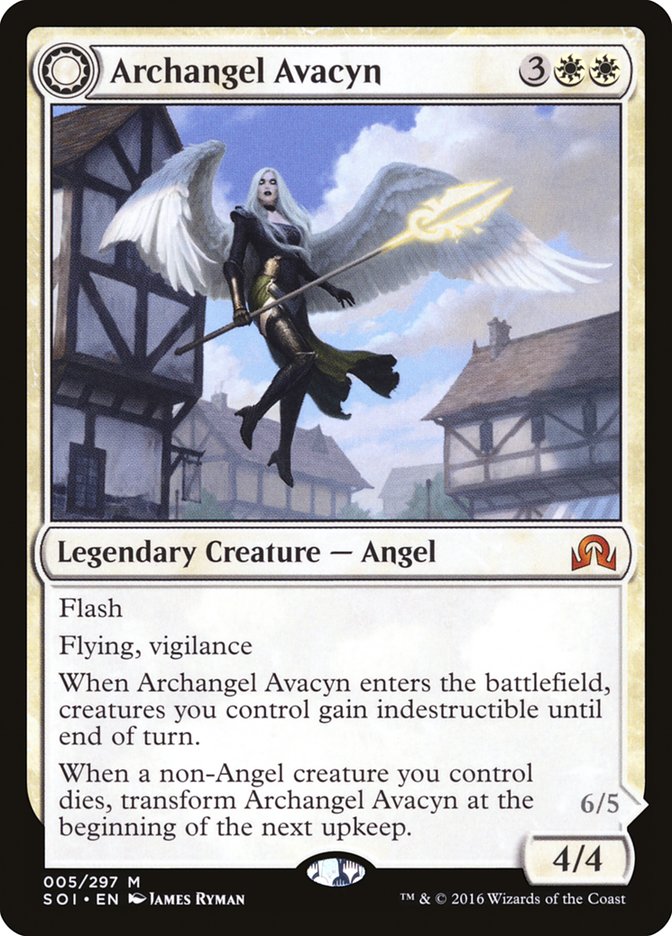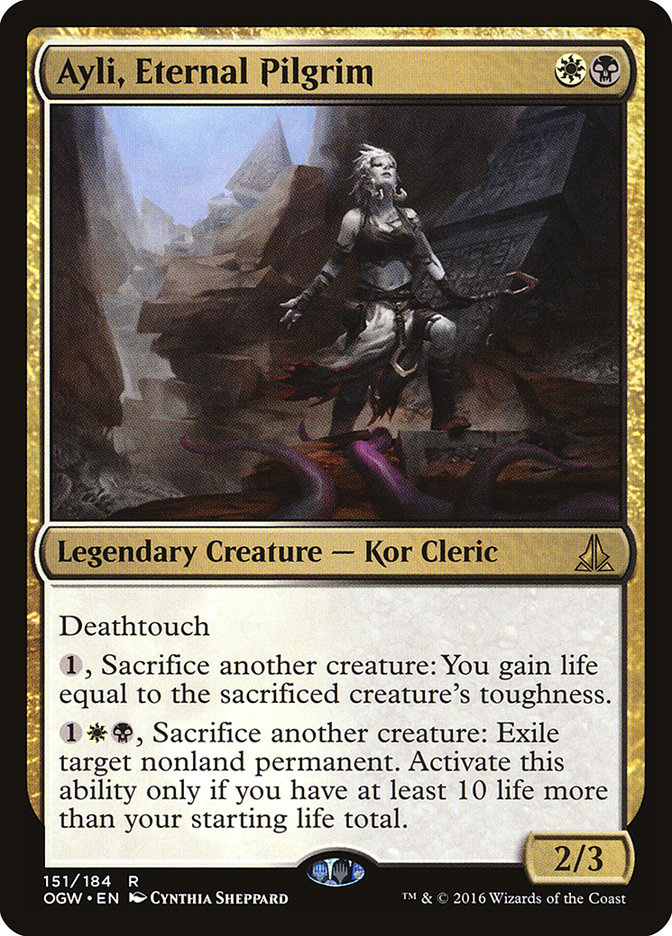 Cryptolith Rite hierarchy by four-color versions. Some use the Eldrazi Displacer / Brood Monitor / Zulaport Cutthroat combo, while others ramp into Dragonlord Atarka, but they are all built around leveraging the mana engine of Cryptolith Rite and cheap creatures.
Cryptolith Rite hierarchy by four-color versions. Some use the Eldrazi Displacer / Brood Monitor / Zulaport Cutthroat combo, while others ramp into Dragonlord Atarka, but they are all built around leveraging the mana engine of Cryptolith Rite and cheap creatures.
Those decks were seen as the natural foil to G/W Tokens, which assumed the role of format bogeyman and Public Enemy Number One. To others, Four-Color Rite looked like the natural evolution of the Rally the Ancestors decks that dominated the back half of Battle for Zendikar Standard with its collection of seemingly small, insignificant creatures that come together to create an unbeatable battlefield presence.
Four-Color Rite has that capability, but unlike Rally the Ancestors, which had its namesake card to fall back on if its first waves of attack were stymied, Four-Color Rite is not nearly as strong going long. The best it can assemble is Eldrazi Displacer plus Reflector Mage or Dragonlord Atarka, only effective against removal-light, creature-heavy decks. The reality is that the last couple weeks of Standard have seen a shift toward more controlling decks, led by the rise of W/B Control after Seth Manfield‘s victory in Grand Prix New Jersey York.
W/B decks received plenty of hype when SoI was spoiled but failed to put up consistent results. Neither did the community coalesce around a specific list. The same smorgasbord of available options that was lauded as a sign for its inevitable dominance was, perhaps not surprisingly, a weakness in the early days of the format as everyone had their own ideas about how to best build the deck, and most of those people were, definitely not surprisingly, wrong. Without a strong resume of finishes or a single list to work on, tuning the deck was left dormant until Seth unleashed his planeswalker-heavy, more controlling list.
W/B, alongside the now well-established Grixis, are the premier control decks in the format and both pose lots of issues for Cryptolith Rite decks. Both play Languish, and W/B makes great use of them by the pairing with Gideon, Ally of Zendikar for a classic squeeze. The normal play pattern against sweepers is to hold back so that you do not lose too many resources to it, but holding back gives the W/B player an open window in which to land and protect Gideon, at which point you are forced to extend to the battlefield to remove it, thus playing into the Languish you were hoping to avoid.
If you instead throw caution to the wind and play your hand out quickly enough to ensure a Gideon does not live, then Languish simply comes down first to clear a path for the planeswalker. There is nothing for the Rite player to do other than hope their opponent doesn’t have the goods, and I don’t think I have to go into detail about why that is a poor plan.
Both Control decks can also pack Kalitas, Traitor of Ghet, which quickly turns the corner if you try to force the control deck into an attrition battle while also largely shutting off one of the most important cards in such battles, Catacomb Sifter. Even if the control player untaps and casts Languish on their next turn, the horde of Zombies they receive will either ensure that the battlefield is stable enough for them to cast bigger spells or threaten to end the game in short order.
The reality is that, as a synergy-laden deck, the individual cards in Cryptolith Rite decks have lower power on average when compared to the rest of the metagame. This fact is no more evident than through the, let’s say, unique humor of Brian Braun-Duin, who during a testing session last week remarked that the best part of playing W/B over a Rite deck would be “not having to register Loam Dryad.”
Rally the Ancestors was the best possible solution to this issue, since it allowed the deck to win from almost-impossible situations and the mere threat of it was enough to force your opponent to slowplay their hand so as to not allow it to undo all their previous efforts. You could try to hold up Hallowed Moonlight, but losing two mana per turn was enough to make their anemic creatures into real threats. Strip Mine is already busted; giving your opponent two of them for free is not remotely viable.
Four-Color Rite doesn’t have any card or angle of attack that powerful. The Brood Monitor combo is cute but nearly impossible to assemble from behind, since your opponent is going to kill your Eldrazi Displacers on sight. Dragonlord Atarka hasn’t been enough to take over games consistently since the days of G/R Devotion, much to the chagrin of Ramp players everywhere. Instead you’re left to rely on the power of Collected Company, which can only do so much. Control decks these days don’t give you time to draw back into games. Gideon, Kalitas, and Goblin Dark-Dwellers get you dead while you’re stuck topdecking Loam Dryad.
And to make matters worse, even the aggro decks are catching on. Prepared G/W Tokens pilots are coming prepared with the requisite removal needed to handle the key cards from the Rite decks. Without the ability to assemble its powerful synergies, the Rite decks cannot keep up against Nissa, Voice of Zendikar and Gideon, Ally of Zendikar going long; nor can they compete as an aggressive deck without drawing an inordinate number of copies of Reflector Mage and Collected Company.
This is not to say that Cryptolith Rite is a bad card, nor the decks built around it bad decks. But after Grand Prix New York, they were on the short list of best decks in the format, and the recent memories of Rally’s dominance sparked an overreaction that we were in for three more months of its successor picking up where it left off. But as it is currently built, Four-Color Rite is not a foundational deck in Standard, powerful enough to transcend the constant metagame fluctuations and put up good numbers on a weekly basis. Instead, it is a narrowly powerful deck that needs a certain metagame around it to flourish.
Of course, the deck could become a foundational deck in the format if you find a powerful enough late-game plan, but the issue there is doing so without sacrificing too much from the core of the deck, which is the final key aspect of Rally the Ancestors: it was a one-card plan. Reality Smasher seems to be gaining in popularity in lockstep with straight Bant versions of the Rite deck, but when your deck is playing Loam Dryad, getting a two-for-one won’t be enough. Reality Smasher has to be the finisher in an aggressive gameplan, which takes away the hallmark versatility of the deck.
Instead, I would expect the deck to wane in popularity, only to flare back up when the metagame becomes weak to it again, a Magic tale as old as time.
The decline in Rite brings an interesting texture to Standard, since we are left with a format polarized between aggressive Humans decks and Languish-based control decks, with the ever-present G/W Tokens in the middle.
To fight other control decks, you want cards like Transgress the Mind, Ruinous Path, and Read the Bones. But those are your worst cards against aggressive decks, Mono-White Humans in particular. Similarly, Languish, Ultimate Price, and Grasp of Darkness are great against aggro but rather poor against control. Trying to find the right balance between the extremes of the metagame is the most important puzzle to solve in the next week or two of Standard.
One of the cards that could be key in bridging the gap is Hangarback Walker. With fewer Reflector Mages around, the Barrel of Thopters can freely sit back, accrue some counters, force your control opponent into some poor trades, pressure opposing planeswalkers, or trade for an early creature or two while preserving your life total. Declaration in Stone and Anguished Unmaking can be an issue, but if your Humans opponent is forced to use a removal spell early rather than develop their battlefield or your control opponent is using their most versatile removal on a creature and not a planeswalker, that is a positive exchange.
Hangarback Walker naturally plays well with Archangel Avacyn, as we have seen in G/W Tokens, but could be incorporated into W/B Control without much hassle. Having more built-in sweepers to punish players who hold back in the face of Languish is nice, even allowing you to shave on Languishes without losing much against aggressive decks. And in control mirrors, Avacyn can pressure planeswalkers, thereby preserving your premium removal spells. Unsurprisingly, this is moving the W/B deck in a more midrange direction so as to not be too cold to the extremes of the format.
Moving in a midrange direction gives you malleability, so you can tailor yourself to your opponent, whatever extreme of the format they may be on. BW is well-suited for this since there are so many options, as Ari Lax noted in his article on Premium this week. Ayli, Eternal Pilgrim is a card we haven’t seen much recently, but it plays nicely with Hangarback Walker to ensure it dies, and dies when you want it to. It is also a great early creature against aggressive decks, even through multiple Anthems.
With so many options, the key to winning with W/B is constant experimentation so you understand how each variant differs from the others, and which fringe cards are appropriate for a given weekend. Archangel Avacyn and Hangarback Walker may only be good for one weekend, so you can’t miss your window because you were afraid to deviate from the norm.
The major problem with this plan is G/W Tokens, which could be the biggest winner from this recent shift, oddly enough. It already has Hangarback Walker and Archangel Avacyn, its planeswalkers are great threats against control decks while also serving as roadblocks against aggro decks, and Sylvan Advocate is a solid threat both early and late. Four-Color Rite was supposed to suppress it, but even at its most popular, it couldn’t stop G/W from winning, and winning again.
The more creature-oriented list of W/B is going to be worse against G/W tokens, since you turn on otherwise dead removal spells, even if the build-your-own sweeper combo can be excellent. In this way, G/W Tokens is going to function as the fun police, which cements it in my mind as the best deck in the format. You can’t get too fancy right now or G/W Tokens will bury you in its rare combination of power and speed. It can play effectively in every phase of the game, has rock-solid mana, and lacks obvious holes. As such, you want to fight them with a deck dedicated to its core strategy.
Thus, G/W Tokens provides the final tension for the metagame to grapple with. You can position yourself to fight the extremes and lose to the middle, or you can move to target one side while losing to the other. No matter where you go, you are only going to hit two of the three, which makes for an interesting question of positioning. You can try to predict which portion of the metagame will underperform and gain an edge by metagaming against the rest of the field. Alternatively, you can find a new gameplan against one section of the metagame and gain a significant edge that way.
Previous Standard formats were dynamic, since decks faded in and out of the metagame every week. This format is more stable but no less dynamic, since there are so many options when building the top decks. We get close each week but have yet to arrive at truly stock versions of the top decks. So while Theros was “pick your baby and jam it until your eyes bleed” and Khans of Tarkir was “find a new deck each week,” Shadows over Innistrad looks to be “pick your baby and find the right version each week.”
A Magic player’s work is never done.

